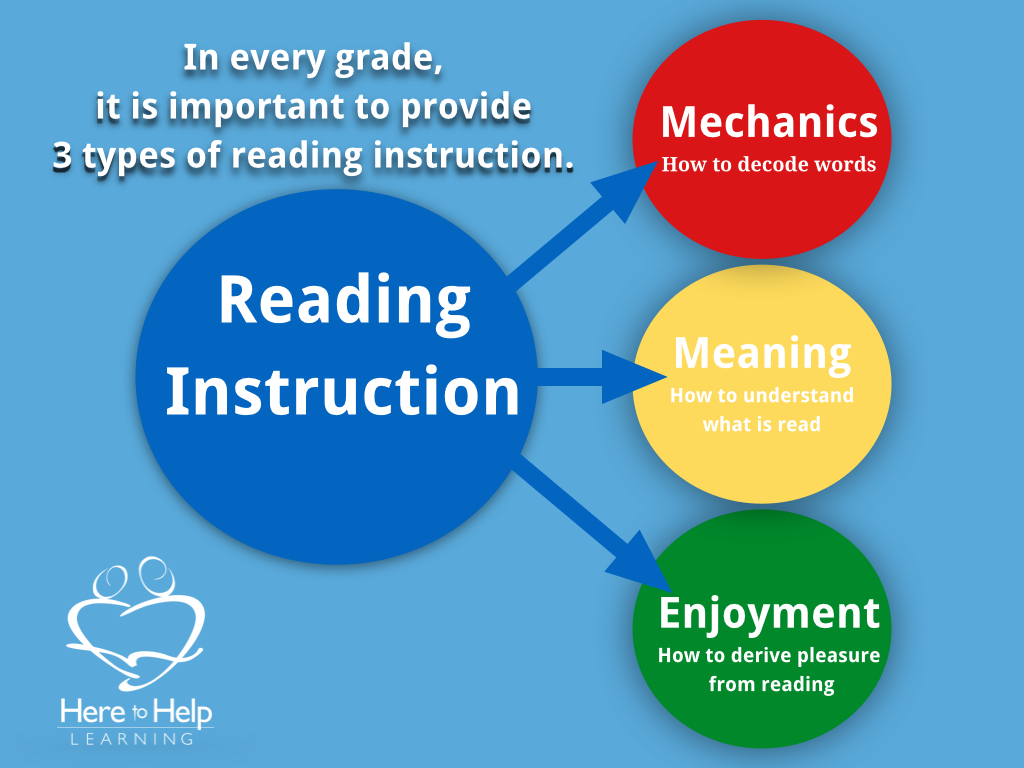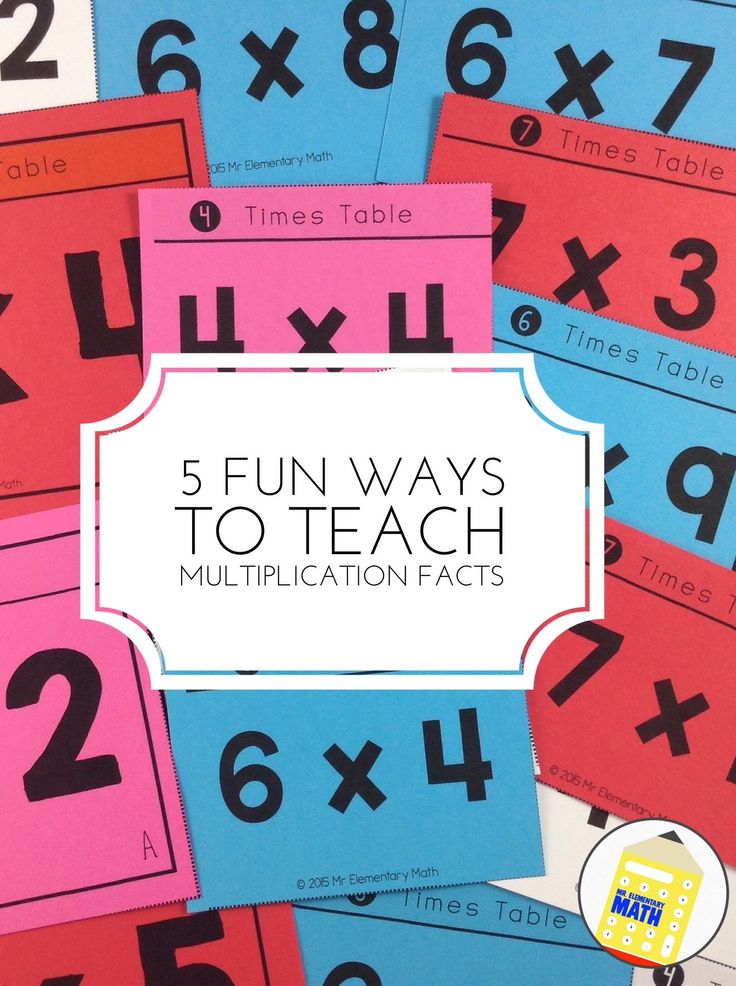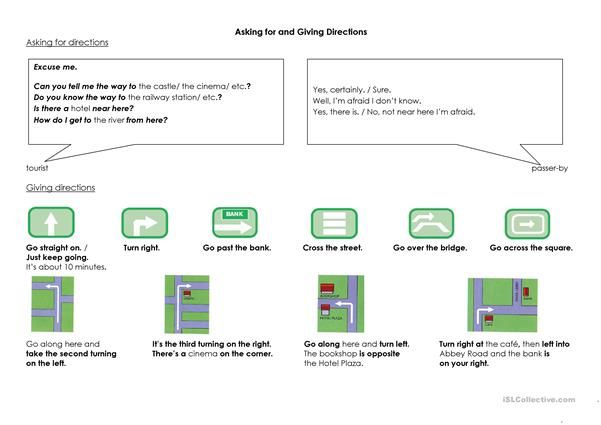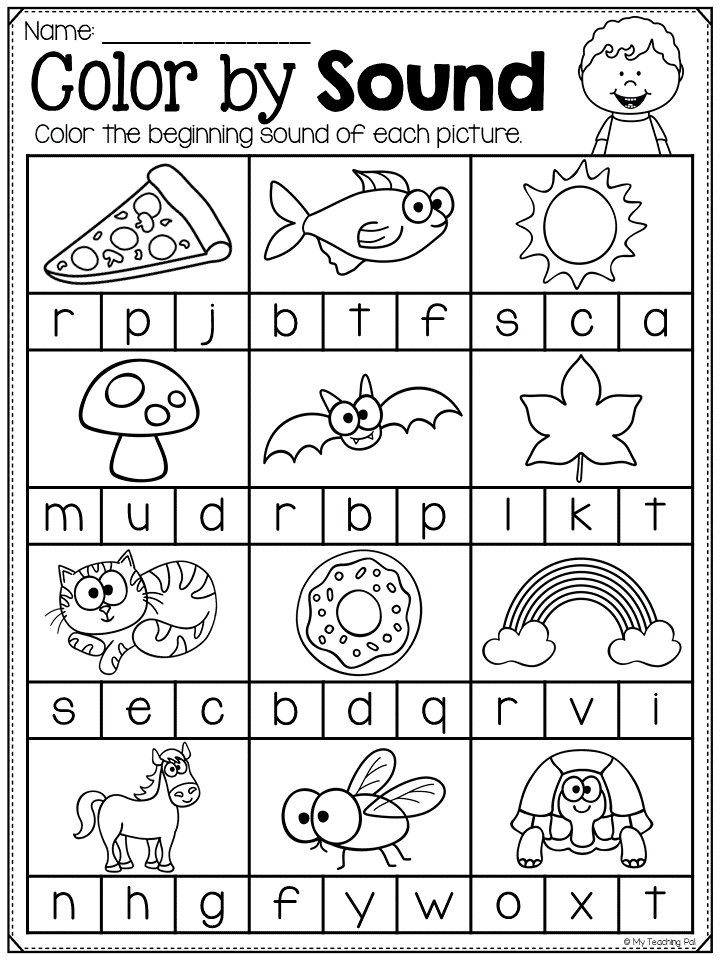The stages of reading development
The 5 Stages for Developing Literacy
Teaching Tips
June 17, 2021
0
4 min
Literacy development is the process of learning words, sounds, and language. Children develop literacy skills in order to learn to read and write confidently and eventually improve their communication skills overall. The stages of literacy development that a child goes through can vary depending on the child’s comprehension levels but generally include the same key concepts along the way. Understanding literacy development in children as an educator is key for helping children master these core skills that set them up for their education. With an understanding of literacy development and how to address each of the stages of literacy development, both educators and students alike will be set up for success in the classroom.
Why is Literacy Development Important?
As the pillars of language and reading skills, literacy development is a crucial time in a child’s life. Educators need to understand why literacy development is so important in order to effectively help children within each stage of their early literacy development.
Here are just a few reasons early literacy development is important:
- Children with confident reading abilities typically struggle less with their studies and have a confident approach to their education.
- Strong literacy skills translate well into independent learning and encourage consistent growth in and out of the classroom.
- Literacy development affects the way students communicate and problem solve. Those with strong literacy skills usually have improved cognitive ability.
As a child grows older and demonstrates the key stages of literacy development they will improve their reading and writing ability. The five stages of literacy development include emergent literacy, alphabetic fluency, words and patterns, intermediate reading, and advanced reading. Each stage of literacy development helps the child move forward and become a stronger student. Keep in mind that a child's current age group doesn’t necessarily mean that they’re at that step in their early literacy development.
Each stage of literacy development helps the child move forward and become a stronger student. Keep in mind that a child's current age group doesn’t necessarily mean that they’re at that step in their early literacy development.
Age Range: 4-6 years old.
As the earliest stage of literacy development, emergent literacy is the first moment that a child begins to understand letters and words. While many of the behaviors of the emergent literacy stage are not fully formed and irregular, these are still some of the first signs that a child is beginning to form literacy ability.
Here are Some Behaviors of Stage 1 Learners:
- Pretending to be able to read children’s books.
- The ability to recognize the first letter of their name.
- Singing the ABCs, even if unable to identify letters separately.
- Trying to memorize certain books to “read” them.
- The ability to recognize some letters and potentially their sound.
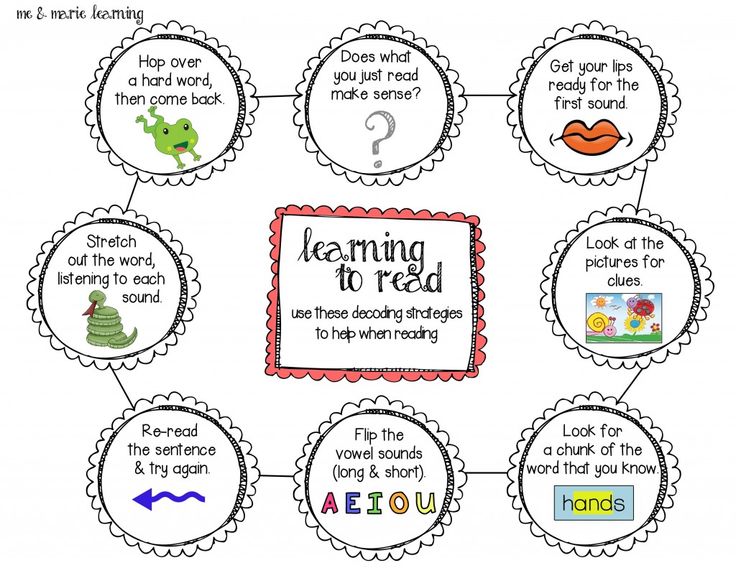
- The ability to find words in their environment.
To learn helpful strategies to support emerging readers by helping them understand what alphabet knowledge and phonological awareness are and why they are both so critically important watch this free webinar, 5 Essential Strategies to Effectively Teach Letters and Sounds.
Stage 2: Alphabetic Fluency
Age Range: 6-7 years old.
As the child grows older and more comfortable with learning their words and letters, they enter the alphabetic fluency stage of literacy development.
Here are Some Behaviors of Stage 2 Learners:
- No longer “pretend” reading.
- Finger-pointing to words while reading them.
- Beginning to recognize words.
- Admitting that they’re unable to read certain words.
- Using pictures and context clues to figure out certain words.
- Reading out loud word by word.
Stage 3: Words and Patterns
Age Range: 7-9 years old.
Sometimes referred to as the “transitional” stage of literacy development, the words and patterns stage is when children begin to develop stronger reading skills. This is the stage when children can vary the most in terms of skills and may adopt behaviors in multiple stages of literacy development.
Here are Some Behaviors of Stage 3 Learners:
- Less decoding of words and stronger ability to comprehend reading materials.
- More self-correction when what is read is unclear.
- Less sound by sound reading and easier time grouping letters.
- Able to recognize words that pop up most often automatically.
- Less reliance on context clues to figure out unknown words.
- Beginning to be able to spell complex consonant words like “-tch”.
Stage 4: Intermediate Reading
Age Range: 9-11 years old.
During the intermediate stage of literacy development, children begin to rely less on educational crutches that help a child learn new words. This is also when children are becoming able to write out sentences with less error and develop stronger fluency overall.
This is also when children are becoming able to write out sentences with less error and develop stronger fluency overall.
Here are Some Behaviors of Stage 4 Learners:
- Reading to learn new information and writing for multiple purposes.
- Less difficulty with independent reading.
- Reading to explore new concepts from numerous perspectives.
- Reading longer materials such as textbooks with little difficulty.
- An interest in wanting to learn and develop new vocabulary.
Stage 5: Advanced Reading
Age Range: 11-14 years old.
As the last stage of literacy development, advanced reading is when children become fully fluent and capable of relying on independent reading to learn new information. Reading and writing provide little difficulty and students can absorb complex reading materials during this stage.
Here are Some Behaviors of Stage 5 Learners:
- The desire to read numerous types of reading materials.

- Reading becomes a daily tool for learning new information.
- The ability to formulate longer texts such as essays or book reports.
- Readers usually have a strong understanding of the meaning and semantics of words.
- The ability to understand and retain complex reading materials.
Develop Early Literacy with Learning Without Tears!
Each stage of literacy development provides its own unique challenges and triumphs in learning to become confident in reading and writing. Learning Without Tears specializes in early childhood development programs that help further progress within the stages of literacy development. Learning Without Tears offers a wide range of educational materials to help teachers create an engaging lesson plan that will get children excited to learn more. With resources for parents to get children set up for school and programs for teachers to teach early literacy concepts, Learning Without Tears is committed to helping children become confident students. Learning Without Tears has created resources and educational materials for children in pre-k to 5th grade to help students succeed during every stage of literacy development and early childhood education. Explore Learning Without Tears to help children get the most out of their education today.
Learning Without Tears has created resources and educational materials for children in pre-k to 5th grade to help students succeed during every stage of literacy development and early childhood education. Explore Learning Without Tears to help children get the most out of their education today.
A—Z for Mat Man and Me
!
Seamlessly bring the ABCs to life while building foundational literacy skills with our new letter book series. Each of our illustrated letter books introduces a letter of the alphabet and emphasizes their associated sound through captivating, visual stories. The engaging stories in each book capture children's imaginations and expose them to social-emotional skills and diverse cultures.
Learn More → .
Related Tags
Ask the Experts Teaching Tips Multisensory Learning Readiness Home Connection
Ask the Experts, Teaching Tips, Multisensory Learning, Readiness
Pint-Size Book Authors: Using Early Readers as Mentor Texts
September 10, 2021
0 3 min
Ask the Experts, Teaching Tips, Multisensory Learning, Readiness, Home Connection
Why is Literacy Development Important for Children?
June 17, 2021
0 4 min
Ask the Experts, Teaching Tips, Multisensory Learning, Readiness, Home Connection
Naming Letters Is Not a Straight Path to Literacy: Here’s Why
April 15, 2021
4 2 mins
There are no comments
What are the Five Stages of Reading Development?
Spread the love
I am the proud father of a two-year-old son who has an insatiable appetite for books. Before he goes to bed every night, I read him at least a couple of bedtime stories, just like most parents. Storytime is always an interactive activity for us, as he follows along with me, posing questions, and repeating words and phrases. Sometimes he likes to retell the story to others, which always amazes me.
Before he goes to bed every night, I read him at least a couple of bedtime stories, just like most parents. Storytime is always an interactive activity for us, as he follows along with me, posing questions, and repeating words and phrases. Sometimes he likes to retell the story to others, which always amazes me.
Even at two, he has a keen sense of print awareness, which is the understanding of how text works and how to interact with it. One night while reading to him I started to think about the stages of reading development, and how The Edvocate was long overdue for an article on the subject. I know the phases of the reading development process, but it has been over a decade since I read any literature on the topic. And so I began my research, only to find out that only a couple of authoritative articles exist on the subject, and many of them differ on what the stages are, how many stages exist, and what age range each stage encompasses.
This only motivated me more, as I decided to write a brief, yet definitive article, listing and discussing the five stages of reading.
STAGE 1: THE EMERGENT PRE-READER (TYPICALLY BETWEEN 6 MONTHS TO 6 YEARS OLD)
During the initial phase of the reading development process children sample and learn from a full range of multiple sounds, words, concepts, images, stories, exposure to print, literacy materials, and just plain talk during the first five years of life.
STAGE 2: THE NOVICE READER (TYPICALLY BETWEEN 6 TO 7 YEARS OLD)
During the second phase of the reading development process children are learning the relationships between letters and sounds and amongst printed and spoken words. The child begins to read stories with high-frequency words and phonically regular words and uses emerging skills and insights to “sound out” new one-syllable words.
STAGE 3: THE DECODING READER (TYPICALLY BETWEEN 7 – 9 YEARS OLD)
During the third phase of the reading development, process children are beginning to read familiar stories and text with increasing fluency. This is accomplished by consolidating the foundational decoding elements, sight vocabulary, and meaning in the reading of stories and selections that the child is already familiar with.
This is accomplished by consolidating the foundational decoding elements, sight vocabulary, and meaning in the reading of stories and selections that the child is already familiar with.
STAGE 4: THE FLUENT, COMPREHENDING READER (TYPICALLY BETWEEN 9 – 15 YEARS OLD)
During the fourth phase of the reading development process, reading is used to acquire new ideas to gain new knowledge, to experience new feelings, to acquire new attitudes, and to explore issues from multiple perspectives. Reading includes the study of textbooks, reference works, trade books, newspapers, and magazines that contain new ideas and values, new vocabulary and syntax.
STAGE 5: THE EXPERT READER (TYPICALLY FROM 16 YEARS AND OLDER)
During the fifth phase of the reading development process, the learner is reading from a wide range of advanced materials, both expository and narrative, with multiple viewpoints. Learners are reading broadly across the disciplines, including the physical, biological and social sciences as well as the humanities, politics and current affairs.
What do you think of my list?
Stages of formation of reading skill
Stages of formation of reading skill
Reading skill requires a long time for its formation. Psychologist, professor T.G. Egorov identifies three stages in the process of forming this skill: "analytical, synthetic, or the stage of the emergence and formation of an integral structure of action, and the stage of automation"'.
The analytical stage falls on the period of learning to read and write. Having enrolled to study, the child already owns the oral forms of speech activity: listening and speaking. On their basis, the formation of written forms of speech - reading and writing. The child makes two discoveries: discovers that speech is "built" from sounds, and then discovers the relationship between sound and letter. Reading his first syllables, the student recognizes and decodes the letters, reproduces the sound form of the word, masters the general way of reading any syllables: learn to focus on the vowel following the consonant. Modeling the relationship of vowels and consonants, the student discovers the first regularity in his life in his native language: the principle of the positional nature of the Russian language (D.B. Elkonin). By learning to read, he learns to think.
Modeling the relationship of vowels and consonants, the student discovers the first regularity in his life in his native language: the principle of the positional nature of the Russian language (D.B. Elkonin). By learning to read, he learns to think.
Synthetic stage is characterized by reading in whole words; at the same time, the visual perception of the word and its pronunciation almost coincide with the awareness of reading. Further, the child masters reading by combinations of words (syntagmas). M.I. Omorokova notes that “there is a significant difference between reading a single sentence and the whole text, since the text is a new reading unit with its own characteristics that the child should be familiar with.
The difficulties of teaching contextual synthetic reading lie in the fact that if the fusion of technique and understanding of the plane of meanings (subjective, factual content) occurs relatively quickly, then the fusion of technique and understanding of the meaning of the text is a long process » 2 .
In elementary school, students learn learning reading (or evenly attentive, JI. Schwartz). Learning reading requires the student to have certain technical skills and understanding of information, the degree of completeness of which should reach 100%. It is important that learning reading is formed in two forms: aloud and silently. M.I. Omorokova emphasizes that studying reading aloud and silently should be “detailed, unhurried”, and believes that the pursuit of reading speed is unjustified, since a fairly complete understanding of what is read is carried out at a minimum speed of 50-60 words per minute (JI.A. Shcherba, S. .K. Folomkin). Although this does not mean that the reading speed remains unchanged.
In elementary school, when reading aloud, the pace fluctuates between 70-90 words per minute, and when reading silently, for well-performing students, up to 200 words per minute.
In the middle school, students master such types of reading as viewing, searching and introductory, although elements of these types of reading take place in the practice of the child and in elementary school.
1 T.G. Egorov. Essays on the psychology of teaching children to read. - M., 1953. - p.20
2 M.I. Omorokova. Improving the reading of younger students: a Methodological guide for the teacher. - M., ARKTI, - p.51
At the automation stage, the reading process proceeds in such a way that its technical side works in a kind of automatic mode - like a skill. It is controlled on a subconscious level. The semantic side manifests itself as a complex skill. It focuses on the processing and assimilation of the content of the text being read, which most often appears to the reader as something new in terms of vocabulary, word arrangement, phrase and sentence construction, meaning, and so on. And even if the text turns out to be familiar and is read repeatedly, the motive and purpose of such reading will be associated with the presence in this text of some previously unnoticed elements, details, situations, turns of thought. The technical side of reading is able, through repeated and systematic exercises, to rise to significant heights in a relatively short time and even reach the "ceiling", that is, the existing actual limits. For the rate of reading aloud, this will be 140-180 words per minute, for the rate of reading to yourself - 160-280 words per minute. But M.I. Omorokova notes that “Physiologists and psychologists have convincingly proved that an increase in the speed of reading aloud over 75-90 words per minute leads to a violation of the psycho-physiological mechanisms of listening to the text, to the decoupling of visual and motor processes, lagging behind speech and thought from perception. The information is not fully digested. The main thing in reading is the understanding of information, the convergence of understanding with perception. High read speed slows down these processes » 1 .
The technical side of reading is able, through repeated and systematic exercises, to rise to significant heights in a relatively short time and even reach the "ceiling", that is, the existing actual limits. For the rate of reading aloud, this will be 140-180 words per minute, for the rate of reading to yourself - 160-280 words per minute. But M.I. Omorokova notes that “Physiologists and psychologists have convincingly proved that an increase in the speed of reading aloud over 75-90 words per minute leads to a violation of the psycho-physiological mechanisms of listening to the text, to the decoupling of visual and motor processes, lagging behind speech and thought from perception. The information is not fully digested. The main thing in reading is the understanding of information, the convergence of understanding with perception. High read speed slows down these processes » 1 .
Inner speech plays a huge role at all stages of the formation of the reading process, the development of the mechanisms that carry out this process. It acts as a universal means of performing all mental operations. With its help, visual, auditory, speech-motor representations are logically processed, control, self-control and self-assessment of speech activity take place.
It acts as a universal means of performing all mental operations. With its help, visual, auditory, speech-motor representations are logically processed, control, self-control and self-assessment of speech activity take place.
1 M.I. Omorokova. Improving the reading of younger students: a Methodological guide for the teacher. - M., ARKTI, - p.6
stages and exercises. Blog Logo-Expert
Do you know what violations of the sounds of the back-lingual group are most common and why they cause difficulties in correction?
We invite you to the lecture "Express-correction of sounds [K,K',X,X',G,G',Y'] by imitation with neurostimulation techniques" with Elena Filippovna Arkhipova.
⏰ Date: November 7 at 16.00 (Moscow time)
At the lecture, you will learn why the correction of violations of the group of back-lingual sounds must begin with clarifying the articulation of vowel sounds, you will understand what the author’s innovative system of staging sounds [К,К',Х ,X',G,G',Y'] by imitation according to the "Tree" system and much more.
✨ See you at the lecture!
Competent organization of work and developing object-spatial environment will increase the effectiveness of correctional and pedagogical classes with children with speech impairment
Blog Logo-Expert
formation of speech reading
Primary school is a special stage in the life of any child, which is associated with the formation of the basics of his ability to learn, the ability to organize his activities. It is a full-fledged reading skill that provides the student with the opportunity to independently acquire new knowledge, and in the future creates the necessary basis for self-education in subsequent education in high school and after school.
Interest in reading arises when a child is fluent in conscious reading, while he has developed educational and cognitive motives for reading. Reading activity is not something spontaneous that arises on its own. To master it, it is important to know the ways of reading, the methods of semantic text processing, as well as other skills.
Reading is a complex psycho-physiological process in which visual, speech-auditory and speech-motor analyzers take part. A child who has not learned to read or does it poorly cannot comprehend the necessary knowledge and use it in practice. If the child can read, but at the same time he does not understand what he read, then this will also lead to great difficulties in further learning and, as a result, failure at school.
Reading begins with visual perception, discrimination and recognition of letters. This is the basis on the basis of which the letters are correlated with the corresponding sounds and the sound-producing image of the word is reproduced, i.e. his reading. In addition, through the correlation of the sound form of the word with its meaning, the understanding of what is read is carried out.
There are 3 main points in the complex process of reading:
- Perception of these words. The process of reading itself implies that the reader guesses by letter what words they stand for.
 Reading begins only when the reader, looking at the letters, can pronounce or recall the word that corresponds to the combination of these letters. Accordingly, in addition to vision, memory, mind and imagination are involved in this process.
Reading begins only when the reader, looking at the letters, can pronounce or recall the word that corresponds to the combination of these letters. Accordingly, in addition to vision, memory, mind and imagination are involved in this process. - Reading comprehension. Each word that we read can cause a certain change in our minds, which is due to the understanding of this word. For one word, some vivid image pops up in our minds, for another - a feeling, etc.
- Reading score. In the formation of reading skills, not only the fact itself (“I read the book”) is important, but a critical assessment of the material read.
The motive for reading in children is always a need. At the first stage, it is the desire to learn to read; to master the very process of the emergence of the letters of the word. When this skill is mastered, another motivation arises: the desire to understand what exactly a particular text means. In the future, the motives become more complicated, and the child wants to find out some specific fact, understand the motives of the main character, determine the main idea in a popular science text, etc.
T.G. Egorov distinguishes several stages in the formation of reading skills:
- Mastery of sound-letter designations.
- Reading by syllable.
- Formation of synthetic methods of reading.
- Synthetic reading.
Acquisition of sound-letter designations occurs during the entire pre-letter and literal periods. At this stage, children analyze the speech flow, sentence, divide it into syllables and sounds. The child correlates the selected sound from speech with a certain graphic image (letter).
Having mastered a letter, the child reads the syllables and words with it. When reading a syllable in the process of merging sounds, it is important to move from an isolated generalized sound to the sound that the sound acquires in the speech stream. In other words, the syllable must be pronounced as it sounds in oral speech.
At the stage of syllable-by-syllable reading, the recognition of letters and the merging of sounds into syllables occurs without any problems. Accordingly, the unit of reading is the syllable. The difficulty of synthesizing at this stage may still remain, especially in the process of reading long and difficult words.
Accordingly, the unit of reading is the syllable. The difficulty of synthesizing at this stage may still remain, especially in the process of reading long and difficult words.
The stage of formation of synthetic reading techniques is characterized by the fact that simple and familiar words are read as a whole, but complex and unfamiliar words are read syllable by syllable. At this stage, frequent replacements of words, endings, i.e. guessing reading takes place. Such errors lead to a discrepancy between the content of the text and the read.
The stage of synthetic reading is characterized by the fact that the technical side of reading is no longer difficult for the reader (he practically does not make mistakes). Reading comprehension comes first. There is not only a synthesis of words in a sentence, but also a synthesis of phrases in a general context. But it is important to understand that understanding the meaning of what is read is possible only when the child knows the meaning of each word in the text, i. e. Reading comprehension directly depends on the development of the lexico-grammatical side of speech.
e. Reading comprehension directly depends on the development of the lexico-grammatical side of speech.
There are 4 main qualities of reading skill:
- Correctness. By this is understood the process of reading, which occurs without errors that can distort the general meaning of the text.
- Fluency. This is reading speed, which is measured by the number of printed characters that are read in 1 minute.
- Consciousness. It implies understanding by the reader of what he reads, artistic means and images of the text.
- Expressiveness. It is the ability by means of oral speech to convey the main idea of the work and one's personal attitude to it.
Accordingly, the main task of teaching reading skills is to develop these skills in schoolchildren.
All primary education is based on reading lessons. If the student has mastered the skill of reading, speaking and writing, then other subjects will be given to him much easier. Difficulties during training arise, as a rule, due to the fact that the student could not independently obtain information from books and textbooks.
In educational practice, there are 2 fundamentally opposite methods of teaching reading - linguistic (the method of whole words) and phonological.
The linguistic method involves learning on those words that are most often used, as well as on those that are read the same way as they are written. This method is aimed at teaching children to recognize words as whole units, without breaking them into components. The child is simply shown and said the word. After about 100 words have been learned, the child is given a text in which these words are often found. In our country, this technique is known as the Glenn Doman method.
The phonetic approach is based on the alphabetical principle. Its basis is phonetics, i.e. learning to pronounce letters and sounds. As knowledge is accumulated, the child gradually moves to syllables, and then to whole words.
In addition, there are several other methods:
- Zaitsev method. It involves teaching children warehouses as units of language structure.
 A warehouse is a pair of a consonant and a vowel (either a consonant and a hard or soft sign, or one letter). Warehouses are written on different faces of the cube, which differ in size, color, etc.
A warehouse is a pair of a consonant and a vowel (either a consonant and a hard or soft sign, or one letter). Warehouses are written on different faces of the cube, which differ in size, color, etc. - Moore method. Learning begins with sounds and letters. The whole process is carried out in a specially equipped room, where there is a typewriter that makes sounds and names of punctuation marks and numbers when a certain key is pressed. Next, the child is shown a combination of letters that he must type on a typewriter.
- Montessori method. It involves teaching children the letters of the alphabet, as well as the ability to recognize, write and pronounce them. After they learn how to combine sounds into words, they are encouraged to combine words into sentences. The didactic material consists of letters that are cut out of rough paper and pasted onto cardboard plates. The child repeats the sound after the adult, after which he traces the outline of the letter with his finger.

- Soboleva O.L. This method is based on the "bihemispheric" work of the brain. By learning letters, children learn them through recognizable images or characters, which makes it especially easy for children with speech disorders to learn and remember letters.
There is no universal methodology for developing reading skills. But in modern teaching methods, a general approach is recognized when learning begins with an understanding of sounds and letters, i.e. from phonetics.
There are certain exercises that help build reading skills. Here are a few of them:
- Reading lines backwards letter by letter. The exercise contributes to the development of letter-by-letter analysis. The meaning is simple - the words are read in reverse order, i.e. from right to left.
- Reading through the word. You do not need to read all the words in a sentence, but jumping over one.
- Reading dotted words. Words are written on the cards, but several letters are missing (dotted lines are drawn instead).

- Read only the second half of the word. You need to read only the second part of the word, while the first is omitted. The exercise contributes to the understanding that the second part of the word is no less important than the first, thereby preventing the omission (or reading with distortion) of the endings of words in the future.
- Reading lines with the upper half covered. A sheet of paper is superimposed on the text so that the top of the line is covered.
- Fast and multiple repetition. The child should repeat a line of a poem or a sentence aloud as quickly as possible and several times in a row. Correct pronunciation is extremely important, so if necessary, you need to stop and correct the child.
- Find the words in the text. The child is faced with the task of finding words in the text as quickly as possible. First, they are shown in pictures, then voiced by the teacher.
- Buzzing reading. The text is read by all students aloud, but in an undertone.

Learn more




